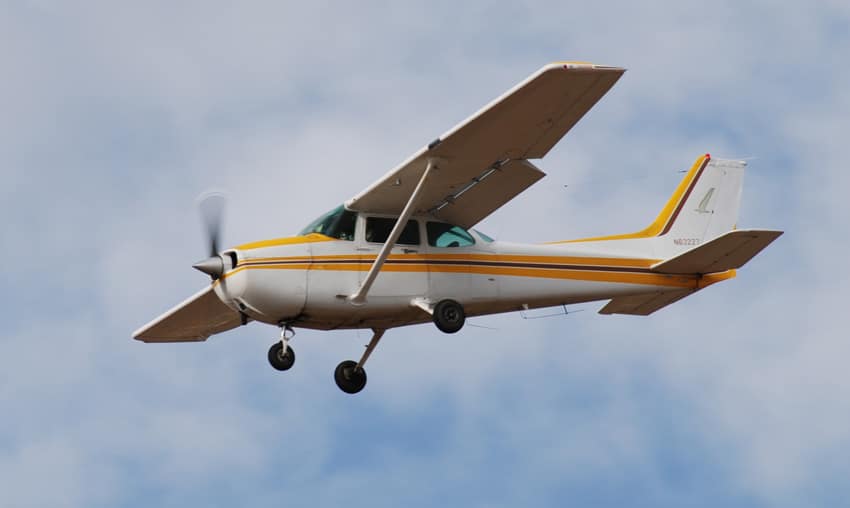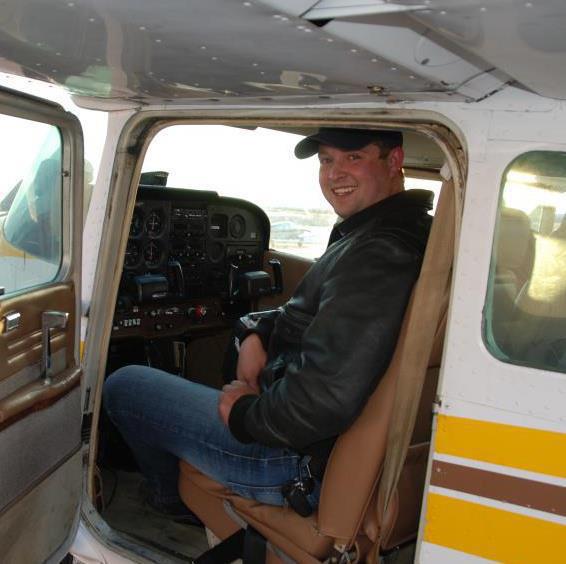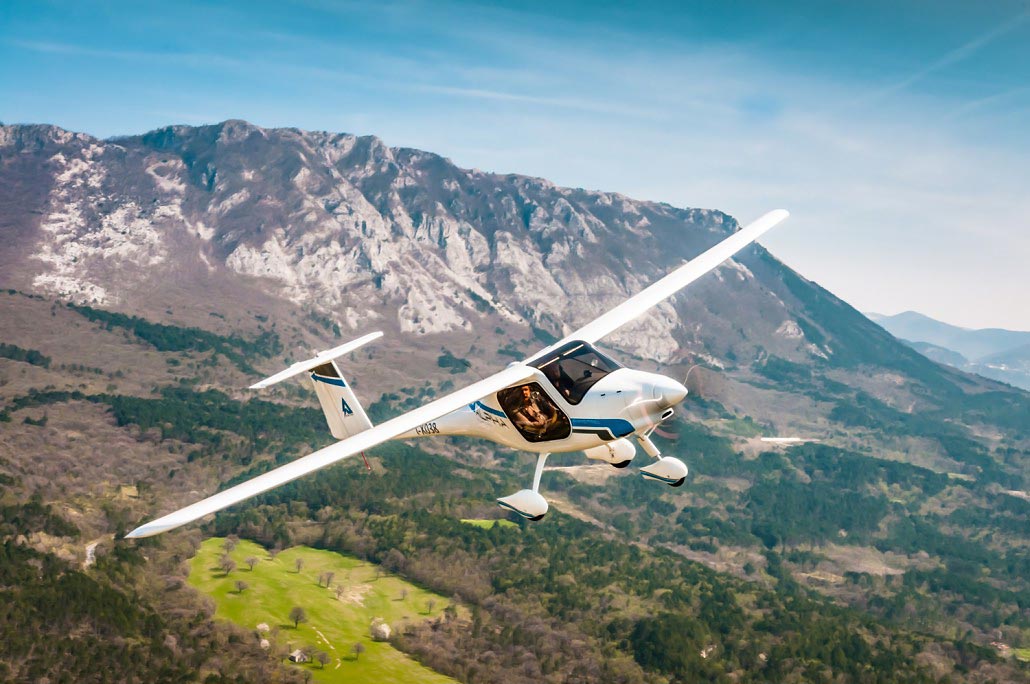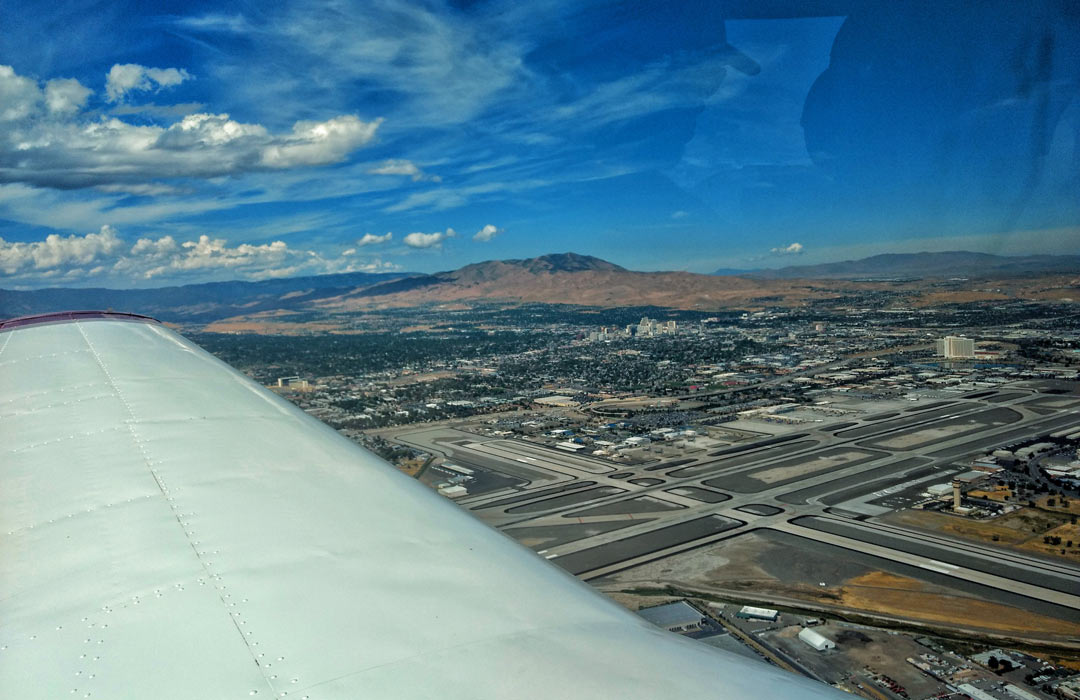I Would Be Learning to Fly in This Old Bird?
Years before I was married, I fell in love with another. My first flight instructor, Garry, introduced me to this lover on my very first flying lesson. She was rough around the edges, and well-loved by hundreds before me, but she remained as reliable and graceful as the day she was christened. I’ll never forget the day we first met. The sun was descending in the late afternoon, creating the first glimpses of a red sunset on the horizon. The sky above was dark with moisture-laden stratiform clouds, and I could feel a few small rain droplets caress my face. The air seemed to have an electric scent, and a few errant rays of sunlight beamed to highlight her gleaming figure. This was the day I met my first love—a Cessna 172P named N63227, or as I would later nickname her, the “Slovenly Pig.”
She was certainly no beauty, but a certain elegance seemed to grace her lines. She was 27 feet long from polished spinner to tailplane and 36 feet from wingtip to wingtip. She was liveried in what I could only describe as “jaundice yellow.” Long dark streaks of exhaust and oil were smeared backward on her engine cowling, and the remains of obliterated, desiccated flying bugs adorned the front windscreen. Her doors opened with a plaintive squeal, and I placed my flight bag on the pilot seat. Her interior never won any contests. I looked around inside and saw cracked, tan vinyl seats, sun-damaged plastic glareshield, vintage round “steam gauge” flight instruments, no autopilot, and no comforts or luxuries of any kind. She was a flying machine, pure and simple, blemished, but with a gentle and forgiving spirit.
Garry instructed me to untie the moorings, and we both pushed the Pig’s ton bulk forward a few yards past the flight line. There, he instructed me how to conduct a pre-flight inspection while following the pilot’s Bible, a checklist. As engrossed in my tutelage as I had become, I nonetheless absorbed my surroundings. The airport was a hub of activity; planes and support vehicles taxied around with such resolve and purpose. Hulking hangars behind the Pig stood cavernously and within I could see aircraft of many different types which I could scarcely imagine flying, but longed to do so. A terrible howl behind me demanded my attention as I glimpsed its source: a large business jet powering its engines to full thrust for takeoff. As I watched its gleaming assemblage leave the ground and thunder into the sky, I felt such envy and excitement. My attention turned back toward the diligent task of the pre-flight inspection. As Garry pointed out what to look for, and how everything worked, I found myself agape at the Pig’s simplicity, of its frailty.

The plane itself was an amalgam of thin sheets of aluminum held together by mere nuts and bolts, thin cables, and even thinner wires. I had difficulty believing that such a spindly creature could hold aloft two grown men thousands of feet above without disintegrating like so much foil. The Pig’s soul was a simple, air-cooled flat four-cylinder engine, much like the engine of a 1974 Volkswagen Beetle I had once owned. A quaint 180 horsepower engine fastened with bits of aluminum foil and hardware store bolts reminded me of my almost paralyzing fear of heights. But my excitement and curiosity outweighed that fear.
After a few more minutes, and several questions later, Garry instructed me how to start the engine. I learned quickly that this procedure was not nearly as mundane as simply turning a key. I located and flipped on the battery master switch, and a loud whining filled the cockpit as the electronic gyroscopes began to spin. The engine required several “injections” from a manual primer pump, to gently coax the Pig from her slumber. Then came a careful combination of movements from two levers: the throttle and fuel mixture lever, controlling the ratio of fuel-to air mixture entering the engine for maximizing performance at various altitudes. Another whining noise began as I turned on the electric fuel boost pump. Finally, the time came to turn the key. The Pig lurched as the engine roared to life, and my heart began to quicken. The Pig was well and truly awake and purred her approval of being awakened, greeting this newcomer with reassurance and warning. The alternator switch was flipped, and then the avionics. Her electronic ears picked up beeps, whistles, and disembodied voices which assailed my ears through my borrowed earphones. A few more checks and turning of knobs by my instructor and we were ready to truly begin.
Upon receiving our takeoff clearance, Garry handed over the controls to me. Slowly, I fed the Pig’s engine to full power, and she eagerly sprinted forward, screaming down the runway with surprising speed. She vibrated violently on the concrete as our airspeed increased. With a shudder, the vibrations vanished, and the ground fell away. I was now in another realm, a world for which the Pig was born. A brief flight of panic gripped me, but the happy purr of the engine assuaged my mortal fear. Garry and I flew around the traffic pattern, and we set ourselves up to land. Never before had I felt such trepidation as the ground grew ever closer with frightening rapidness. A stout crosswind began to buffet the Pig, and rain began to land heavily upon our windscreen, obscuring visibility and momentarily disquieting my wonder. I took a deep breath and allowed myself to focus. Surrendering to the Pig’s graceful movements and powerful self-confidence, I began to feel my own being slip away. I became a part of this wonderful flying machine. I had grown wings.
Garry’s experienced hands and keen eye helped guide my movements on the control yoke, and we glided downward and alighted gently upon the runway. We taxied back to the flight line, and the Pig rumbled on self-assuredly. As the creature idled with longing and invitation, Garry ran through the shut-down procedure. I couldn’t help but feel a little dejected; what seemed like a routine procedure to Garry, seemed to me an involuntary sedation of a vibrant flying creature who lives to soar.

From that moment on, I was hooked. The Pig and I shared many adventures together after that first lesson learning to fly, and I had experienced most of my flight training in that jaundice-yellow metal bird. My wings and confidence grew. On one stormy winter morning, however, my beloved Pig was killed. She was killed not by old age, or by crashing, but by a violent hailstorm. At the time I learned of her fate, I had since gained employment at that same airport. I alone attended and hosted a secret funeral, sequestered shamefully in a forlorn corner of the airfield. I looked upon her twisted splendor and saw the gaping holes in her wings and fuselage, torn asunder by giant hailstones. I wept her loss. The flying club that owned her wrote her off to their insurance as a total loss, not worth the repair, just a twisted heap of so much dead aluminum and steel. Her death was unceremonious, but I wept inside as I would mourn the loss of a dear friend. She was underpowered and spindly, old and ugly. But she captured my love for flying and gave my life new meaning. Today, I keep a picture of me posing next to her on a wall in my bedroom. Captioned underneath: “Farewell, my dear friend. Thanks for the memories.”
Featured Image by Jim Raeder – //www.jraeder.com/















Leave a Reply